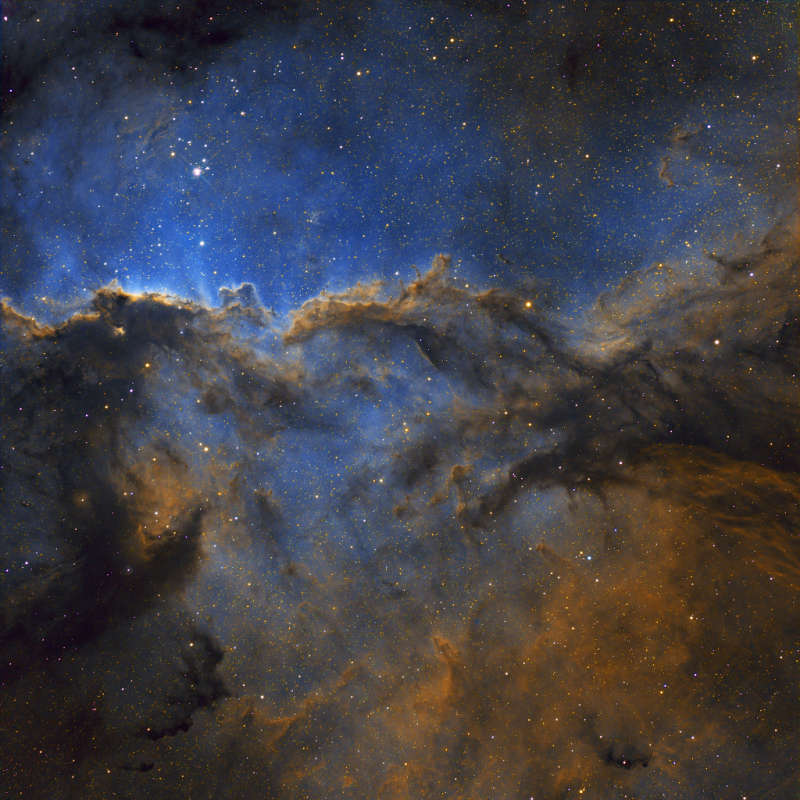Credit & Copyright: Tian Lee
Explanation:
Dark shapes with bright edges winging their way through dusty
NGC 6188 are tens of light-years long.
The emission nebula is found near the edge of an
otherwise dark large molecular cloud in the southern
constellation
Ara, about 4,000 light-years away.
Born in
that region only a few million years ago, the massive young
stars of the embedded Ara
OB1 association
sculpt the fantastic shapes and power the nebular glow with
stellar winds and intense ultraviolet radiation.
The recent
star
formation itself was likely triggered by
winds and supernova explosions, from previous generations of massive
stars, that swept up and compressed the molecular gas.
With image data from the
Chilescope
Observatory,
a false-color Hubble palette
was used to create
this gorgeous wide-field image
and shows emission from sulfur, hydrogen, and oxygen atoms
in red, green, and blue hues.
The field of view spans about four full Moons, corresponding to about 150 light
years at the estimated distance
of NGC 6188.
1999 2000 2001 2002 2003 2004 2005 2006 2007 2008 2009 2010 2011 2012 2013 2014 2015 2016 2017 2018 2019 2020 2021 2022 2023 2024 2025 |
Январь Февраль Март Апрель Май Июнь Июль Август Сентябрь Октябрь Ноябрь Декабрь |
NASA Web Site Statements, Warnings, and Disclaimers
NASA Official: Jay Norris. Specific rights apply.
A service of: LHEA at NASA / GSFC
& Michigan Tech. U.
|
Публикации с ключевыми словами:
emission nebula - molecular cloud - OB association - эмиссионная туманность - Молекулярные облака
Публикации со словами: emission nebula - molecular cloud - OB association - эмиссионная туманность - Молекулярные облака | |
См. также:
Все публикации на ту же тему >> | |
